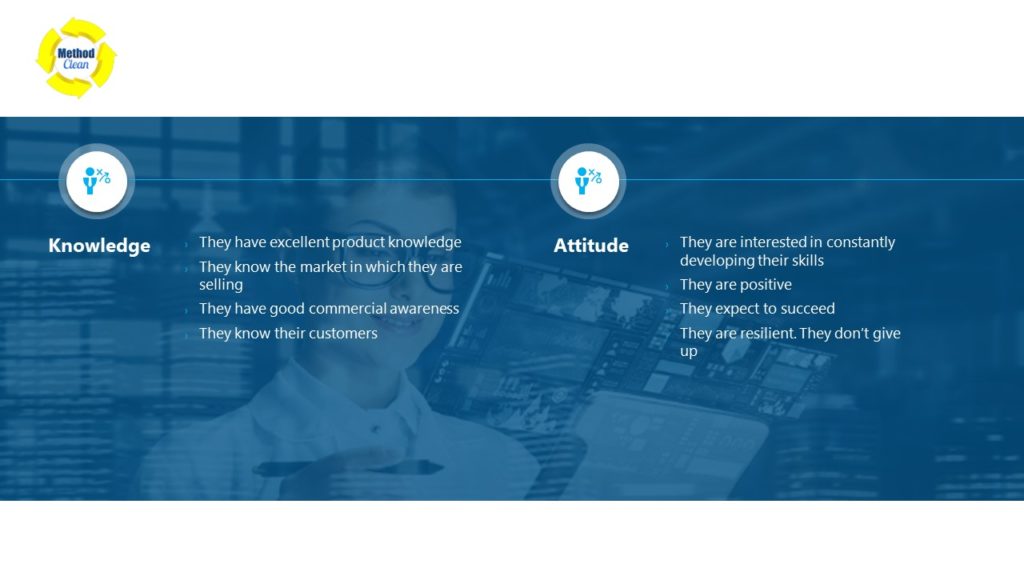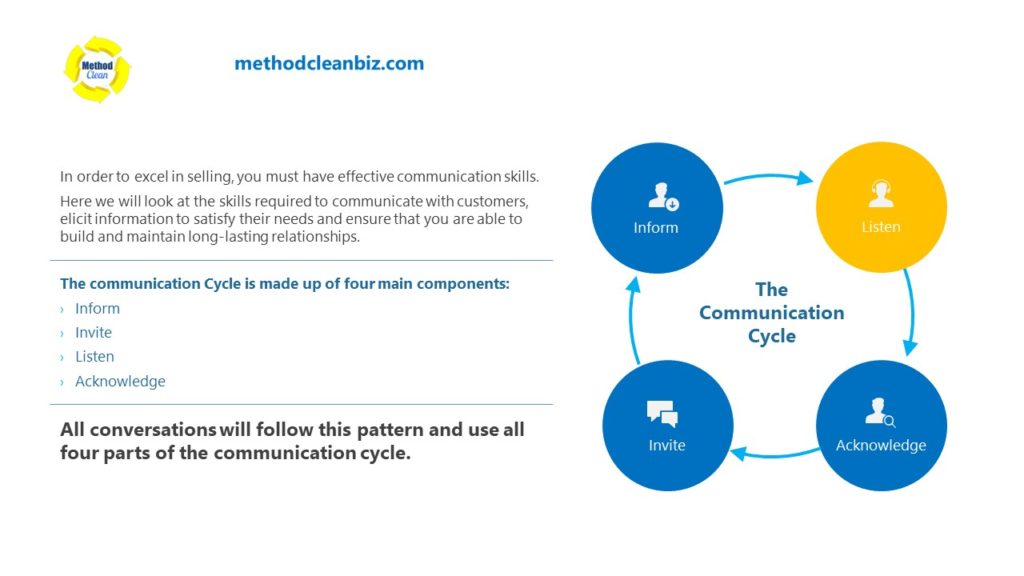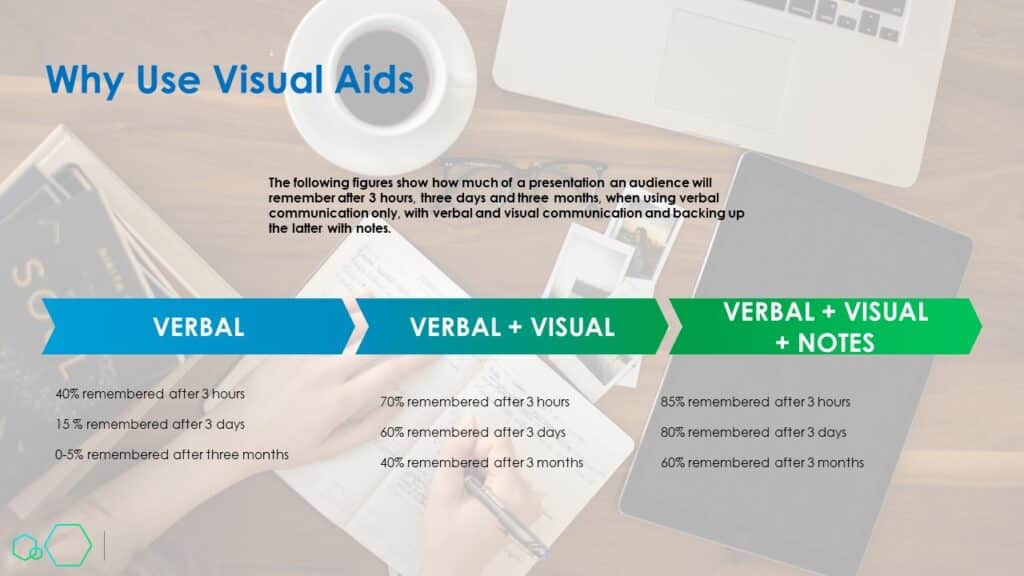Effective Cold Calling Phone Techniques for Cleaning Services
Welcome to our comprehensive guide on effective cold calling techniques for cleaning services. In today’s competitive market, mastering the art of cold calling can significantly boost your lead generation efforts and enhance your ability to close more sales.
The landscape for acquiring commercial cleaning accounts, janitorial contracts, and commercial carpet cleaning jobs has evolved considerably over the years. Previously, the emphasis was on traditional sales training, with marketing strategies often taking a backseat. However, as we move into 2023, the focus has shifted dramatically. Marketing has taken center stage, with a keen emphasis on generating high-quality leads and identifying promising prospects.
While increasing the number of leads is beneficial, the real game-changer lies in optimizing your existing opportunities to close more sales. Even a modest improvement in your closing rate can lead to substantial gains in both profits and profit margins.
These cold calling techniques aren’t just applicable to traditional phone calls—they can also enhance modern digital marketing strategies, including email marketing, social media, website content, and SEO. Regardless of the platform, the core concepts remain the same: building meaningful relationships, understanding customer needs, and effectively communicating the value of your cleaning services.
In this post, we will delve into actionable strategies that will empower you to refine your cold calling skills and achieve greater success in securing contracts and growing your business.
Building Relationships: The Key to Successful Cold Calling
To optimize your cold calling techniques, start by understanding the importance of building relationships and connecting with potential clients. While traditional sales training often emphasizes overcoming objections and closing deals, focusing on relationship-building at the top of the sales funnel can significantly simplify these steps.
The top of the sales funnel involves activities like brand building through social media, email marketing, and direct mail campaigns. These strategies help ensure that people recognize and trust your company. Additionally, nurturing personal relationships with potential customers and positioning yourself as an expert in the cleaning industry are crucial steps in gaining their trust.
Remember, people are more likely to buy from those they like, respect, and trust. By investing time and resources into building these connections, you’ll create a solid foundation for more effective cold calling and increased sales success.
Key Skills and Attitudes for Effective Cold Calling
To optimize your cold calling efforts, it’s essential to develop and demonstrate the following skills and attitudes:
Be Well-Organized and Goal-Oriented
- Clearly define your sales goals.
- Create effective plans to achieve your objectives.
- Maintain focus with a structured approach.
Plan and Prepare Effectively
- Allocate time to plan and prepare for each sales call.
- Gather necessary information and resources ahead of time.
- Ensure you are ready to make a strong impression.
Understand the Buying and Selling Processes
- Gain a deep understanding of how customers make purchasing decisions.
- Align your sales approach with customer needs and decision-making processes.
Manage Your Time Efficiently
- Prioritize activities that drive sales.
- Minimize distractions and maximize time spent in selling situations.
Generate Referrals
- Build a network of satisfied customers who can refer you to new leads.
- Leverage referrals to boost your sales efforts.
Adapt and Adjust Your Sales Plans
- Be flexible and ready to modify strategies as circumstances change.
- Stay relevant and effective in a dynamic market.
Establish Rapport with Decision Makers
- Connect with customers on a personal level to create a positive first impression.
- Build rapport with decision-makers for successful sales relationships.
Listen Actively
- Practice active listening, allowing customers to express their needs and concerns without interruption.
- Understand their perspectives to offer relevant solutions.
Show Genuine Interest in Customer Needs
- Ask thoughtful questions and listen attentively.
- Demonstrate genuine interest to build trust and strengthen relationships.
Identify Customer Needs
- Use effective communication skills to identify customer needs.
- Present tailored solutions that address specific needs.
Handle Objections Professionally
- Address objections persuasively and overcome customer concerns.
- Turn potential barriers into opportunities with a professional approach.
Close Deals and Gain Commitment
- Develop techniques to confidently ask for commitment.
- Negotiate profitable deals and convert leads into customers.
Carry Out Administrative Tasks with Accuracy
- Perform administrative tasks to a high standard.
- Ensure attention to detail in documentation and follow-up.
Build Lasting Rapport Beyond Sales Meetings
- Cultivate relationships with customers beyond the initial sale.
- Establish strong rapport for repeat business and valuable referrals.
Balancing Personal and Business Interactions
When interacting with customers, it’s crucial to establish a personal connection before diving into business discussions. Begin your conversation with a personal touch, like a verbal handshake. During your interaction, feel free to introduce non-business topics to keep the conversation engaging. After the business discussion is complete, wrap up the conversation with a personal remark.
This approach demonstrates that you value personal interactions with your customers as much as the quality of your services. By consistently starting and ending your customer interactions on a personal level, you can make customers feel genuinely cared for and appreciated. This practice can lead to stronger relationships and increased customer loyalty.
Effective Communication in Cold Calling
Effective communication is essential for successful cold calling. In this section, we’ll explore the skills you need to communicate effectively with prospects, gather information to understand their needs, and build long-lasting relationships over the phone.
The Communication Cycle
The communication cycle consists of four main components:
Inform: Begin by clearly introducing yourself and your company. Provide relevant information about the services you offer and how they can benefit the prospect.
Invite: Encourage an open dialogue by inviting the prospect to share their needs and concerns. Ask open-ended questions to foster a two-way conversation.
Listen: Practice active listening by paying close attention to what the prospect is saying. This helps you understand their specific needs and tailor your pitch accordingly.
Acknowledge: Show that you value the prospect’s input by acknowledging their concerns and feedback. This builds trust and demonstrates that you are attentive and considerate.
Every successful cold call follows this pattern, utilizing all four parts of the cycle to create a meaningful and productive conversation.
The Importance of Listening in Phone Sales
Listening is a fundamental aspect of effective communication. It involves receiving and interpreting the messages conveyed by others during the communication process. In a sales context, active listening is crucial for understanding and responding to the needs of your prospects.
The Benefits of Active Listening
Active listening enables a higher level of accuracy in understanding what people are telling us. The better we are at listening, the more effectively we can respond to the information we receive. This leads to stronger relationships and more successful sales interactions.
Common Barriers to Effective Listening
There are several barriers that can hinder effective listening in a sales context. Being aware of these obstacles can help you overcome them:
Thinking You Have Something Better to Say: Avoid focusing on waiting for a pause to interject your own viewpoint. Instead, give your full attention to the speaker and prioritize their message.
Feeling Like You’ve Heard It All Before: Even if you’ve encountered similar objections in the past, listen attentively to each customer to understand their unique perspective and needs.
Preoccupation with What Comes Next: Avoid thinking too far ahead about your next question or response, as this can cause you to miss important information being shared.
Lack of Interest: Even if a topic doesn’t personally interest you, it’s important to show genuine interest and listen attentively, as it holds significance for the speaker.
Enhancing Your Listening Skills
To improve your listening skills, consider implementing the following practices:
Use Open Questions: Ask open-ended questions to understand the content of the message and clarify any points you don’t fully grasp. Balance open questions with closed questions when appropriate to guide the conversation.
Encourage the Prospect: Use positive affirmations like “yes” or “uh-huh” to encourage prospects to share more information and feel heard.
Tolerate Silence: Allow the speaker time to think and respond after asking a question. Silence can be an effective tool for allowing deeper reflection and more thoughtful responses.
Take Selective Notes: Capture key points during conversations to help you remember important details. Avoid attempting to transcribe everything, as it may distract from active listening.
Acknowledging Clients While They Speak
When engaging with clients, it’s crucial to acknowledge their speech, both verbally and non-verbally. Effective acknowledgment helps build rapport and ensures that clients feel heard and valued. Here are various ways to respond effectively:
Reflecting: Reflect what you hear from the client by summarizing or paraphrasing their statements. This shows that you are actively listening and understanding their concerns.
- Example: “So what I’m hearing is that you’re looking for a more flexible cleaning schedule that fits your needs, is that correct?”
Expressing Emotion or Empathy: Use phrases like “That’s great!” or “I’m sorry to hear that…” to show appreciation or empathy based on the client’s statements. This demonstrates that you’re genuinely engaged with what they’re saying.
- Example: “That’s great news about your new office expansion!” or “I’m sorry to hear about the inconvenience; let’s see how we can help.”
Appreciating: Express gratitude for the client’s patience or cooperation, acknowledging any accommodations they’ve made. Appreciation can strengthen the client relationship and build goodwill.
- Example: “Thank you for your patience while we resolve this issue. Your cooperation is greatly appreciated.”
Passive Listening: Use minimal responses like “Yes,” “I understand,” or “I see” to show interest and attentiveness. These small verbal cues indicate that you’re following along with the conversation.
- Example: “Yes, I understand. Please go on.”
Positive Agreement: Show understanding and build rapport by expressing agreement with the client’s statements. Agreeing when appropriate can help create a positive interaction.
- Example: “I completely agree, finding a reliable cleaning service is essential.”
By acknowledging clients while they speak, you demonstrate that you value their input and are committed to meeting their needs. This approach fosters trust and enhances client relationships.
Using Positive Language to Influence Customer Interactions
The choice of words when responding to customers greatly impacts the overall impression you make and helps create a positive environment for feedback and potential sales. Instead of focusing on what you cannot do, use positive language to convey what you can do for the customer. Here’s how different word choices can affect communication:
Positive Language
- “Yes”: Affirmative responses build confidence and show willingness to assist.
- “Immediately”: Indicates promptness and efficiency, reassuring customers of quick service.
- “I can”: Focuses on your ability to meet the customer’s needs.
- “Definitely”: Conveys certainty and confidence in your services.
Neutral Language
- “Perhaps”: Indicates uncertainty, which may leave customers unsure about your capabilities.
- “If I can”: Suggests hesitancy and lack of commitment.
- “I’ll try”: Shows effort but lacks the assurance customers often seek.
Negative Language
- “Unfortunately”: Starts the conversation on a negative note, which can disappoint customers.
- “I can’t”: Directly communicates a limitation or inability, which may lead to dissatisfaction.
By emphasizing positive language and focusing on what you can deliver, you create a more favorable and confident atmosphere that encourages customer trust and satisfaction. This approach not only enhances the customer experience but also increases the likelihood of successful sales interactions.
Words to Use with Customers
| Positive Phrase | Context |
|---|---|
| Are you willing? | To encourage cooperation and engagement. |
| Will you? | To prompt action or confirmation from the customer. |
| What have you considered? | To explore customer thought processes and options. |
| What are the options? | To identify available choices or solutions. |
| Which do you prefer? | To help customers make decisions. |
| What are the alternatives? | To offer different solutions or paths forward. |
| How can it be corrected? | To address issues and find resolutions. |
| How can I help? | To offer assistance and support. |
| What do you want me to do? | To clarify customer expectations and needs. |
| Here are some options | To present choices and facilitate decision-making. |
| I made a mistake | To acknowledge errors and maintain transparency. |
| I understand | To show empathy and understanding of the customer's perspective. |
| I understand your concern | To validate customer feelings and concerns. |
| I apologize for (specific) | To offer a sincere apology and specify the issue. |
| However | To provide alternative solutions or explanations. |
| Will, willing | To express readiness and commitment. |
| Able | To indicate capability and resources. |
| Unable + reasons + options | To explain limitations while offering alternatives. |
Invite Cleaning Prospects by Asking Questions
As you progress in the communication cycle during a cold call, the next crucial stage is the invite phase. This is where effective questioning plays a key role in understanding customer needs and identifying their problems. Use the following types of questions to elicit valuable information:
Open Questions
Start your questions with words like what, why, where, when, and how. These questions allow customers to provide detailed and expansive answers, which can reveal unexpected insights about their needs and preferences. Use open questions thoughtfully, as the “why” question can sometimes make customers feel defensive if not delivered with sensitivity. For example:
- “What challenges are you facing with your current cleaning service?”
- “How do you envision your ideal cleaning schedule?”
Tell Me More
Encourage customers to elaborate on their thoughts by using phrases like “Tell me more about…” or “Could you explain further?” This approach adds a personal touch to your questions and fosters a deeper, more meaningful conversation. For instance:
- “Tell me more about your cleaning priorities.”
- “Could you explain further why this service is important to you?”
Closed Questions
Use closed questions to obtain specific information or to clarify a point. These questions usually lead to “yes” or “no” answers, making them useful for seeking confirmation or agreement. Examples include:
- “Are you currently satisfied with your cleaning provider?”
- “Would you like to schedule a cleaning appointment next week?”
Summary
Summarize the customer’s statements in your own words to ensure mutual understanding and to confirm that you’ve accurately grasped their needs. This not only clarifies any ambiguities but also shows the customer that you are actively listening. For example:
- “So, what you’re saying is that you’re looking for a more flexible cleaning schedule that can adapt to your changing needs?”
By skillfully using these questioning techniques, you can effectively invite prospects to share their needs and build a stronger rapport during your cold calls. This will ultimately help you tailor your services to better meet customer expectations and close more sales.
Inform: How We Speak with Leads, Prospects, and Clients
Did you know that communication is only 7% words? The majority of communication comes from tone of voice (38%) and body language (55%). In the context of cold calling, where body language is absent, the way you deliver your message becomes even more crucial. To establish rapport with your leads, prospects, and clients, you need to be mindful not just of what you say, but also of how you say it.
The Importance of Tone of Voice in Cold Calling
Your tone of voice plays a significant role in shaping the conversation and influencing the listener’s perception. When you frequently repeat the same scripts or responses, as often happens during cold calling, it’s easy to slip into a monotonous tone. This can lead to a lackluster interaction, leaving the prospect disinterested and potentially turning them away from your services.
Strategies for Maintaining an Engaging Tone
Be Enthusiastic and Positive: Show genuine interest in the conversation by varying your pitch and inflection. A lively and upbeat tone can create a positive impression and keep the prospect engaged.
Smile While You Speak: Even though your prospect cannot see you, smiling can positively influence your tone. It naturally makes your voice sound warmer and more inviting, helping to build a connection over the phone.
Use Pauses Effectively: Strategic pauses can emphasize key points and give the listener time to absorb information. This technique can make your speech more dynamic and avoid overwhelming the prospect.
Practice Active Listening: Respond appropriately to what the prospect is saying. Use verbal nods like “I see,” “I understand,” or “That makes sense” to show you are attentive and value their input.
Adjust Your Tone Based on the Prospect: Tailor your approach to match the mood and personality of the prospect. If they are more formal, adjust your tone to be more professional. If they are relaxed, feel free to be more conversational.
Conclusion
In cold calling, your tone of voice is a powerful tool that can significantly impact the success of your interactions. By being aware of how you speak and making conscious efforts to keep your delivery engaging and enthusiastic, you can enhance your communication effectiveness and build stronger relationships with your prospects. Remember, it’s not just about the words you say; it’s how you say them that makes all the difference.




